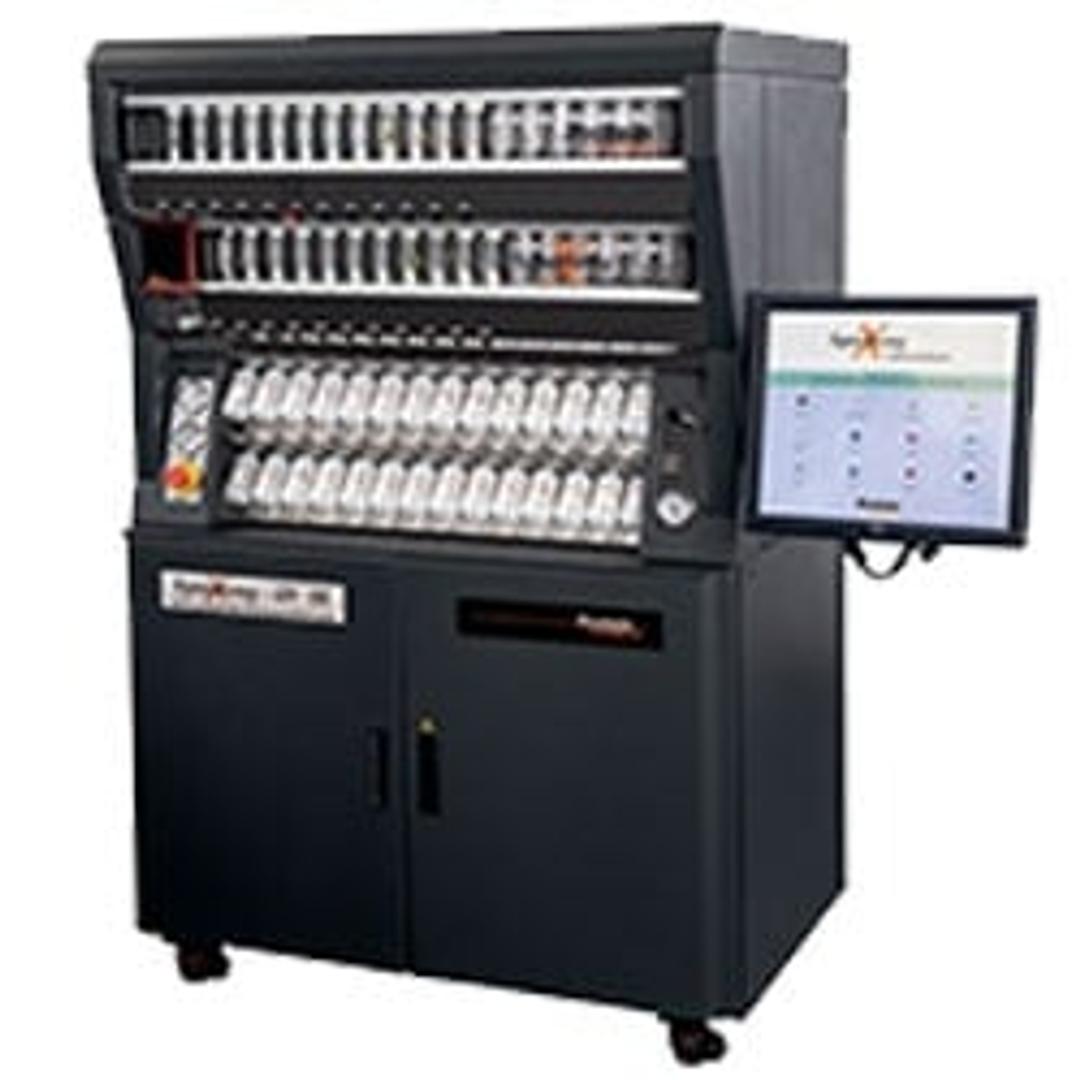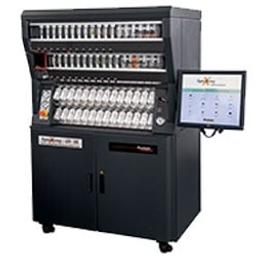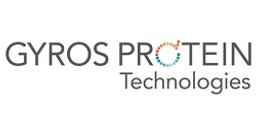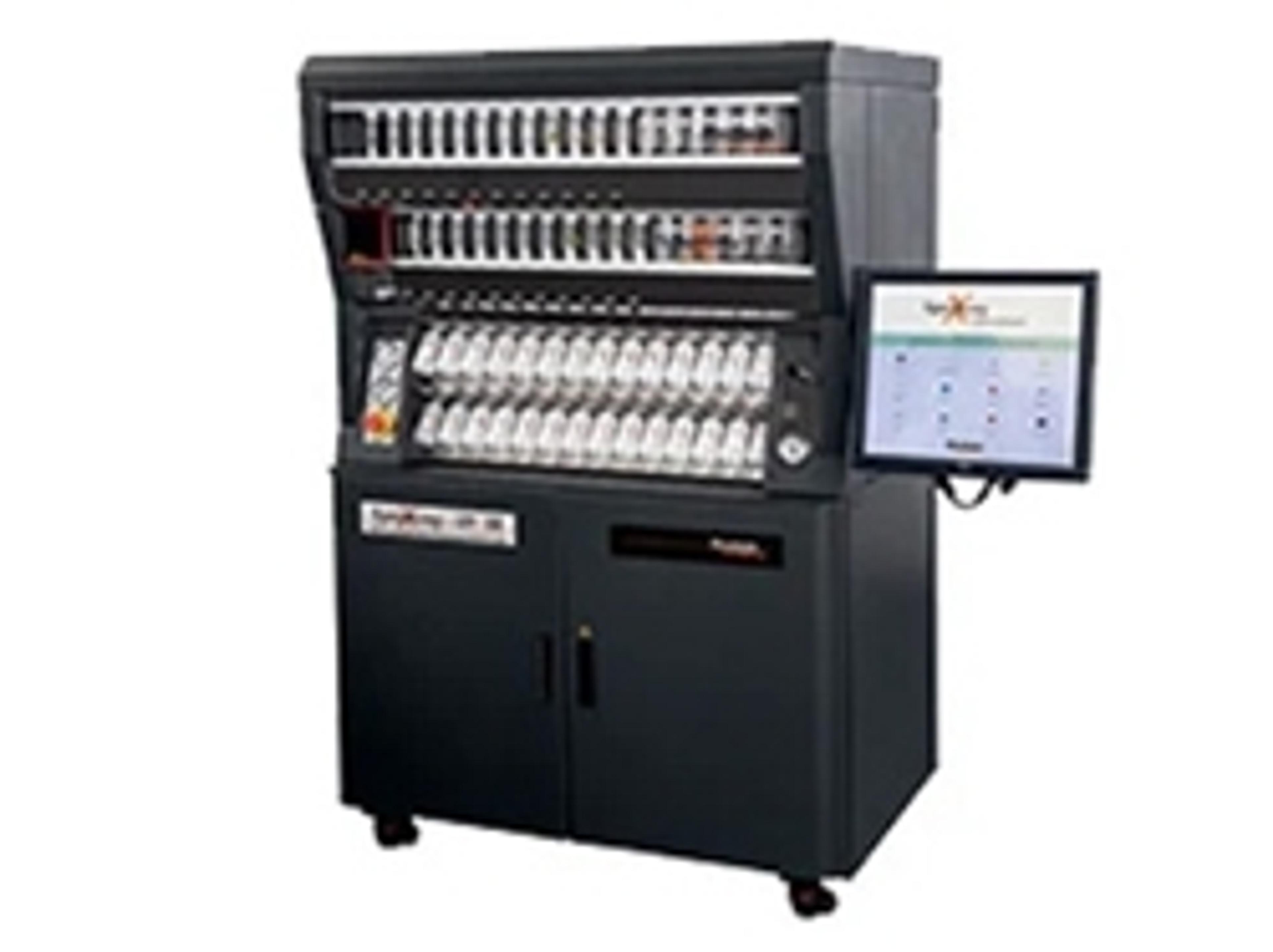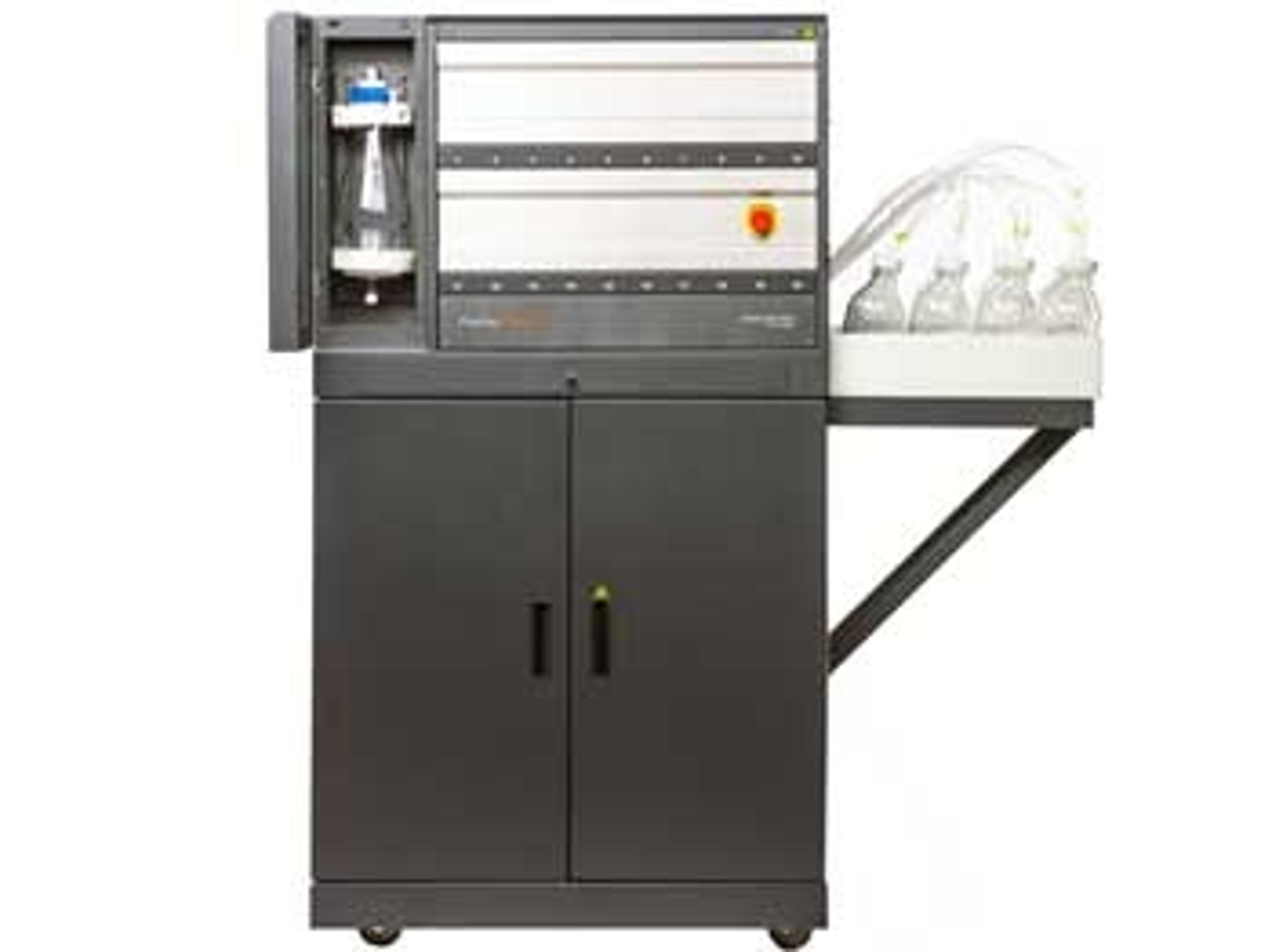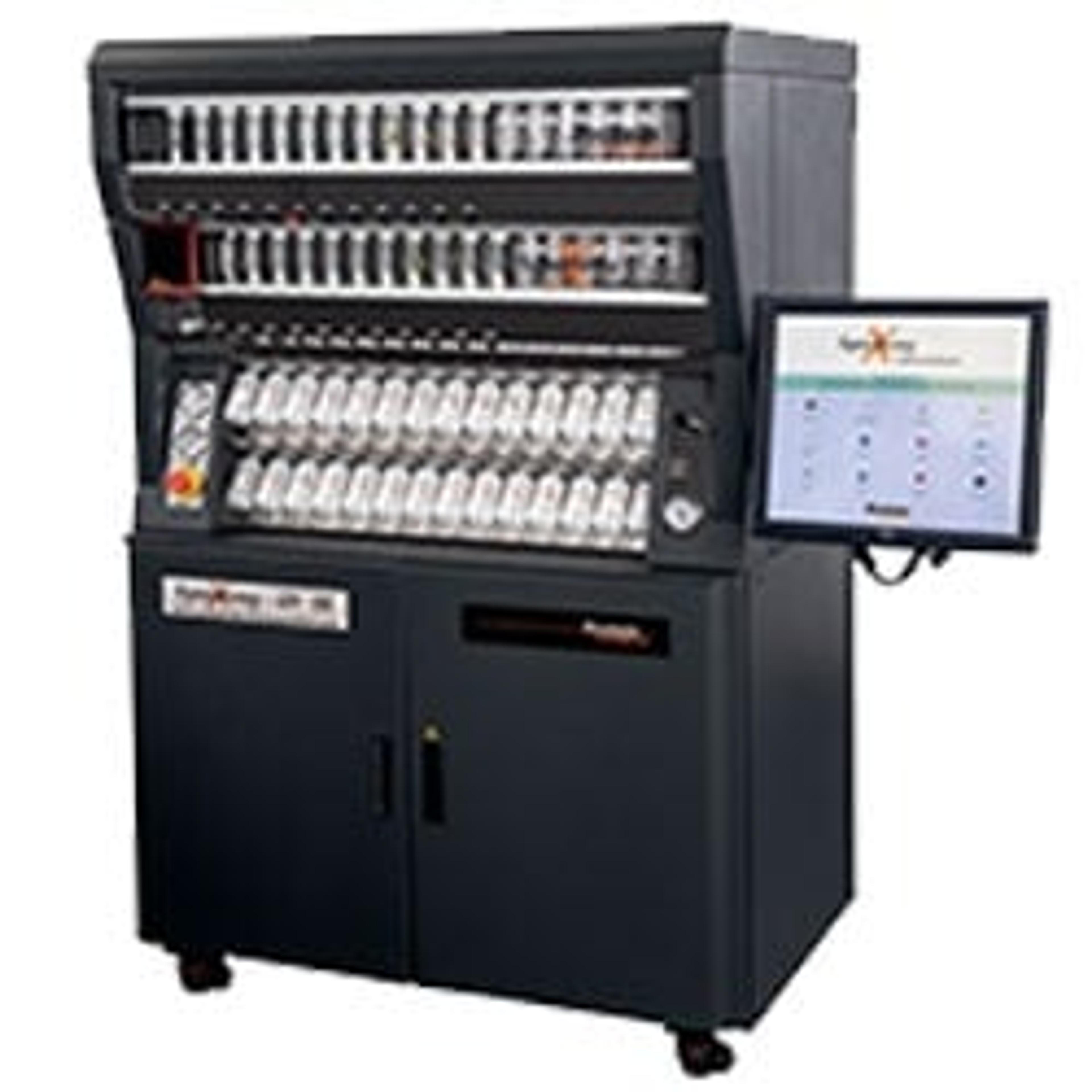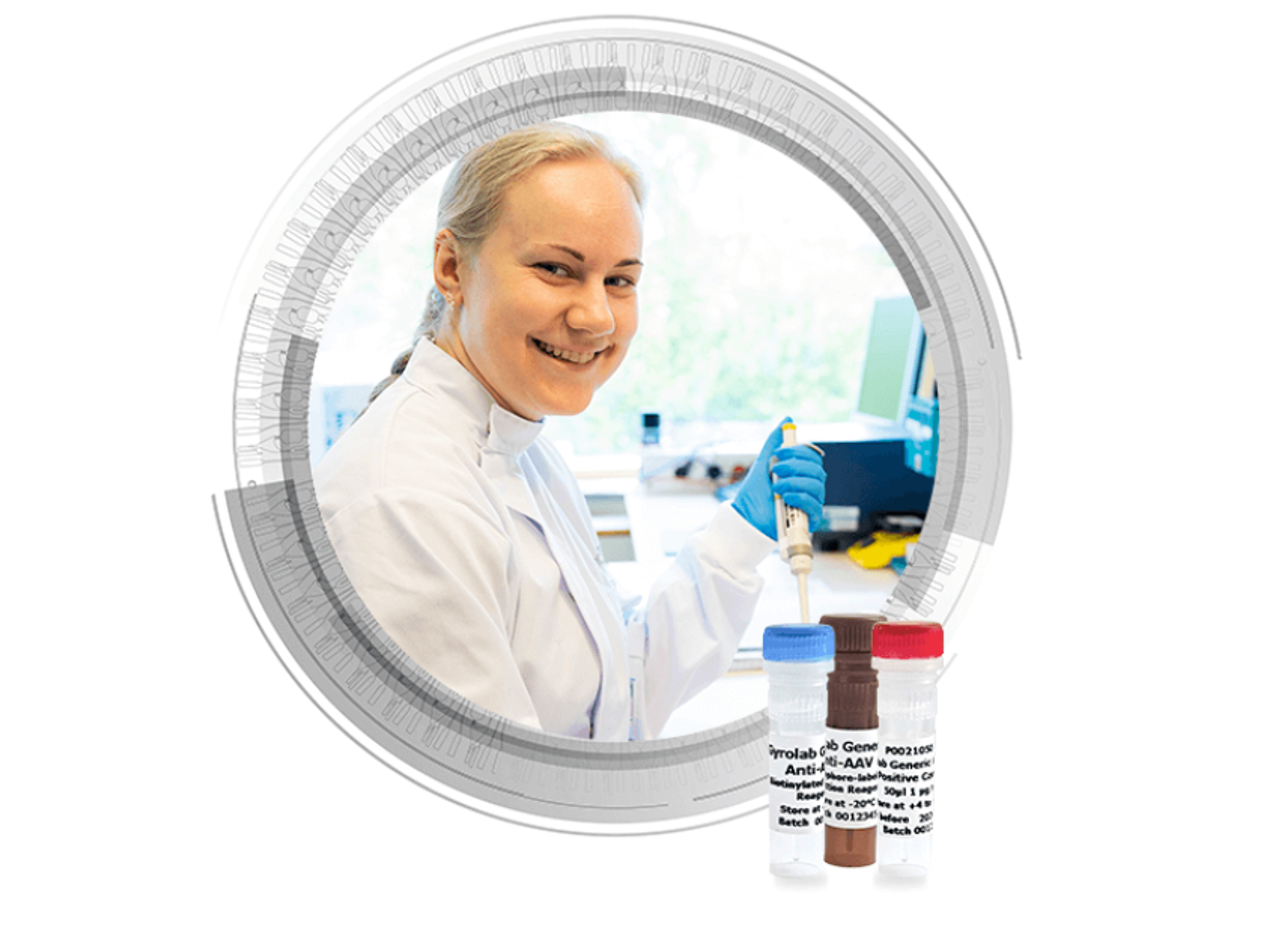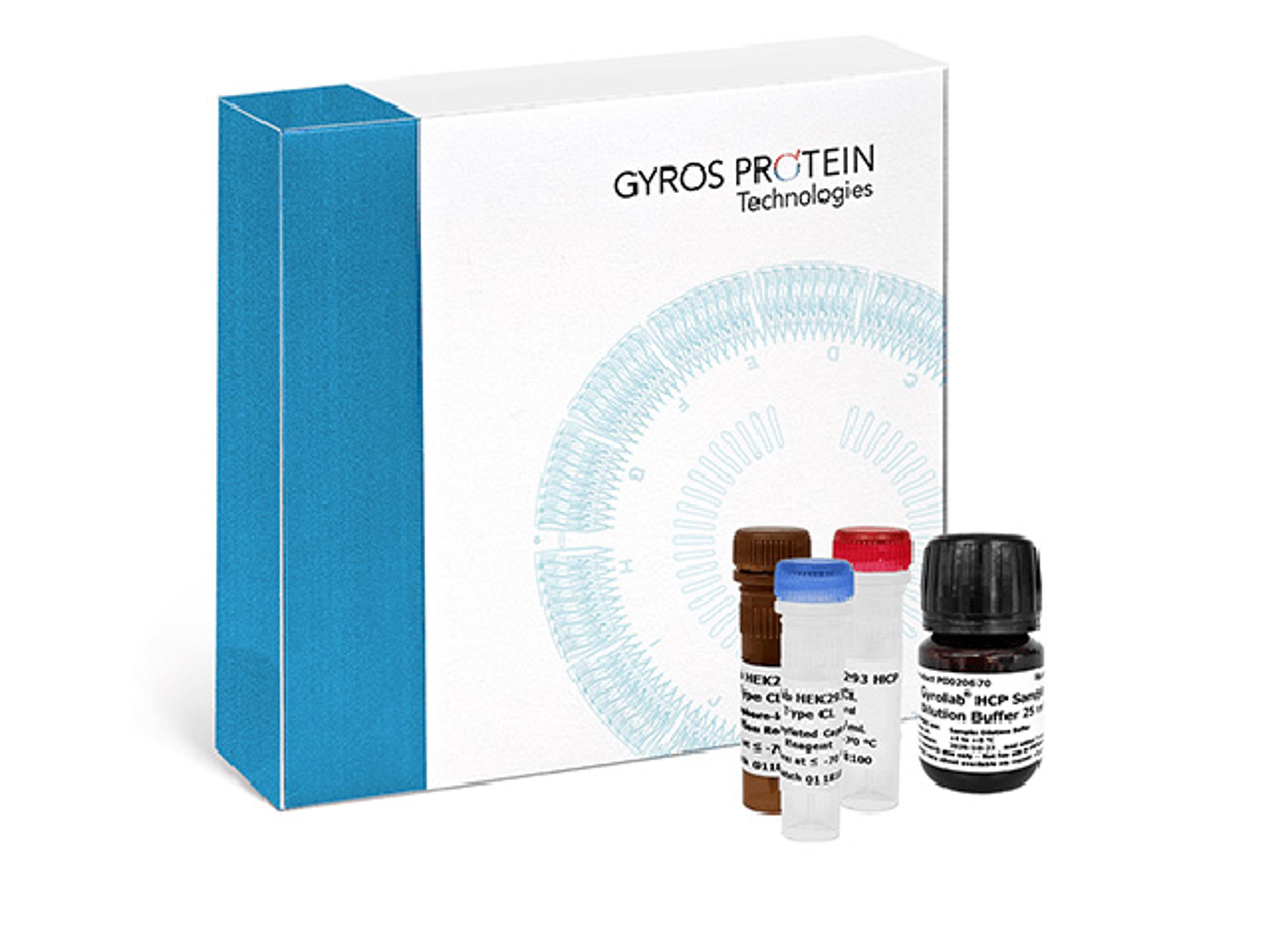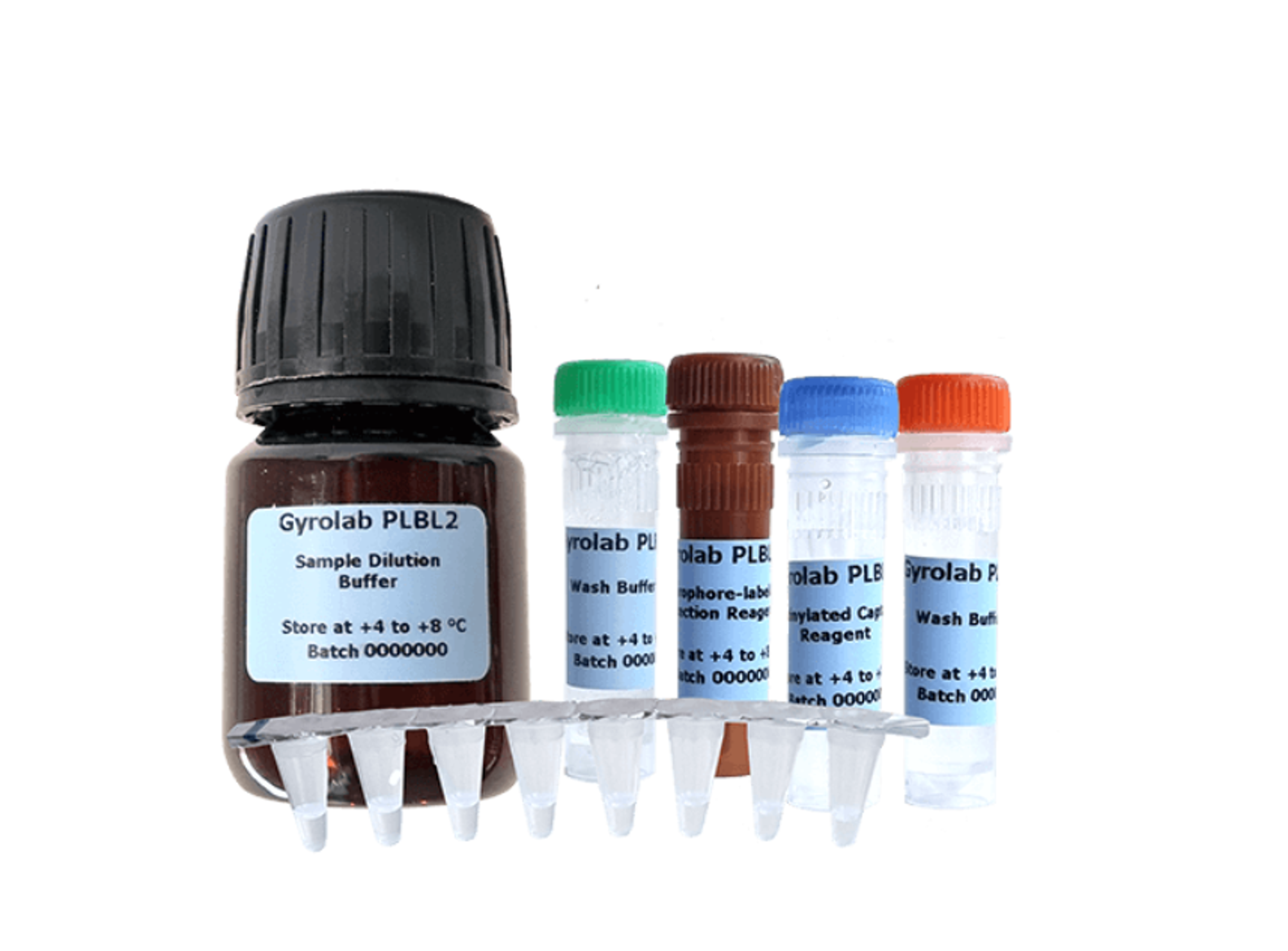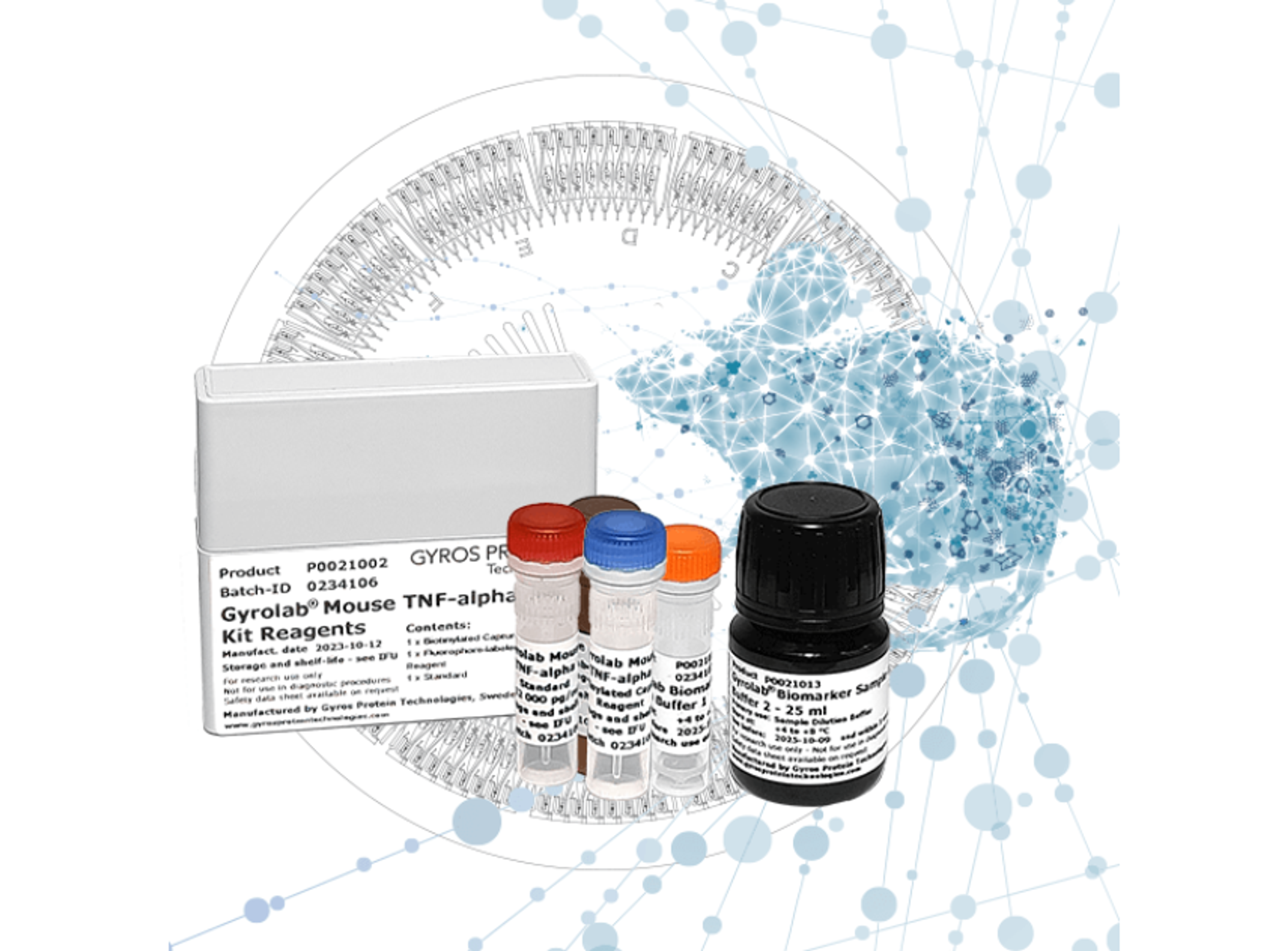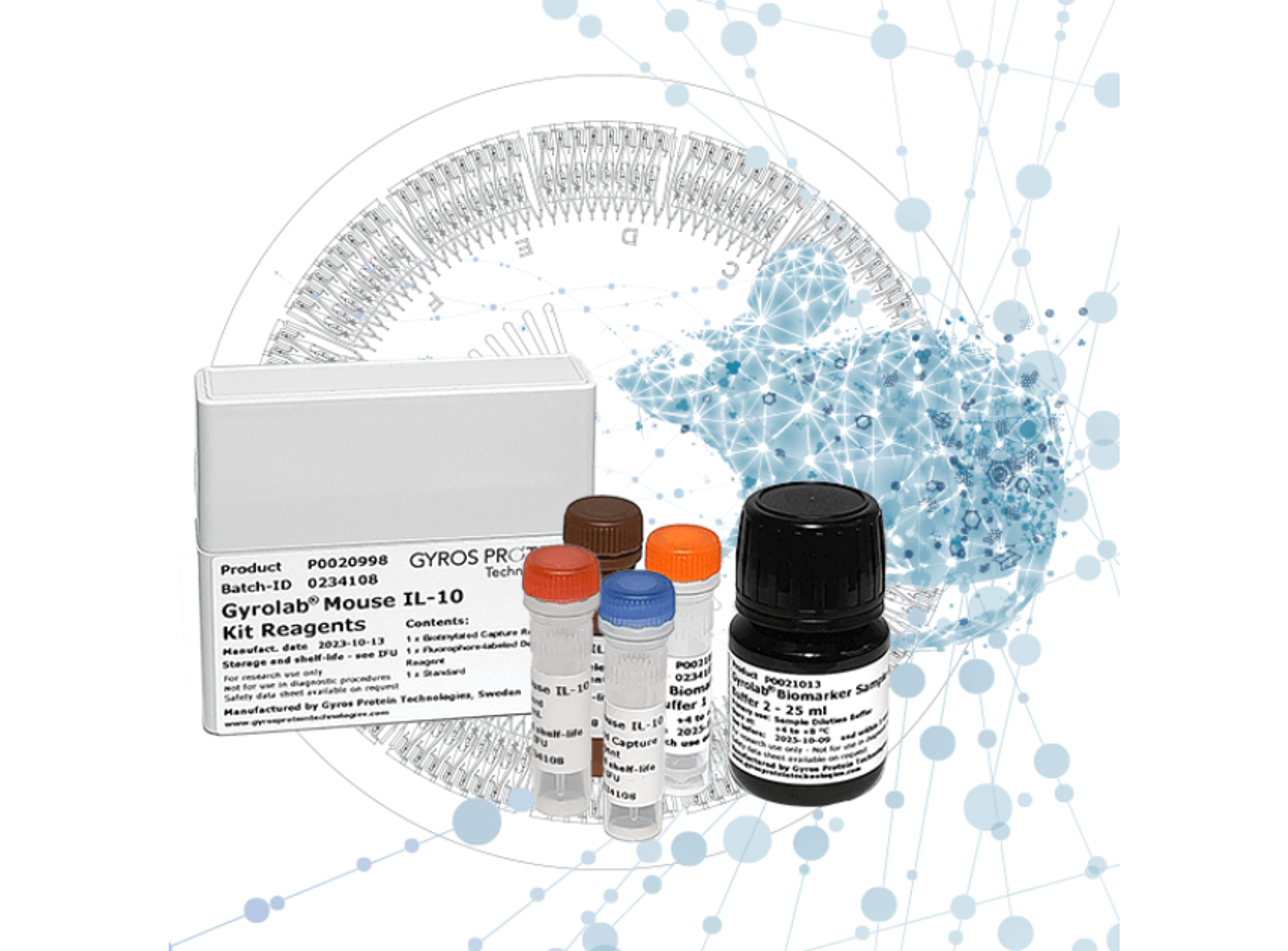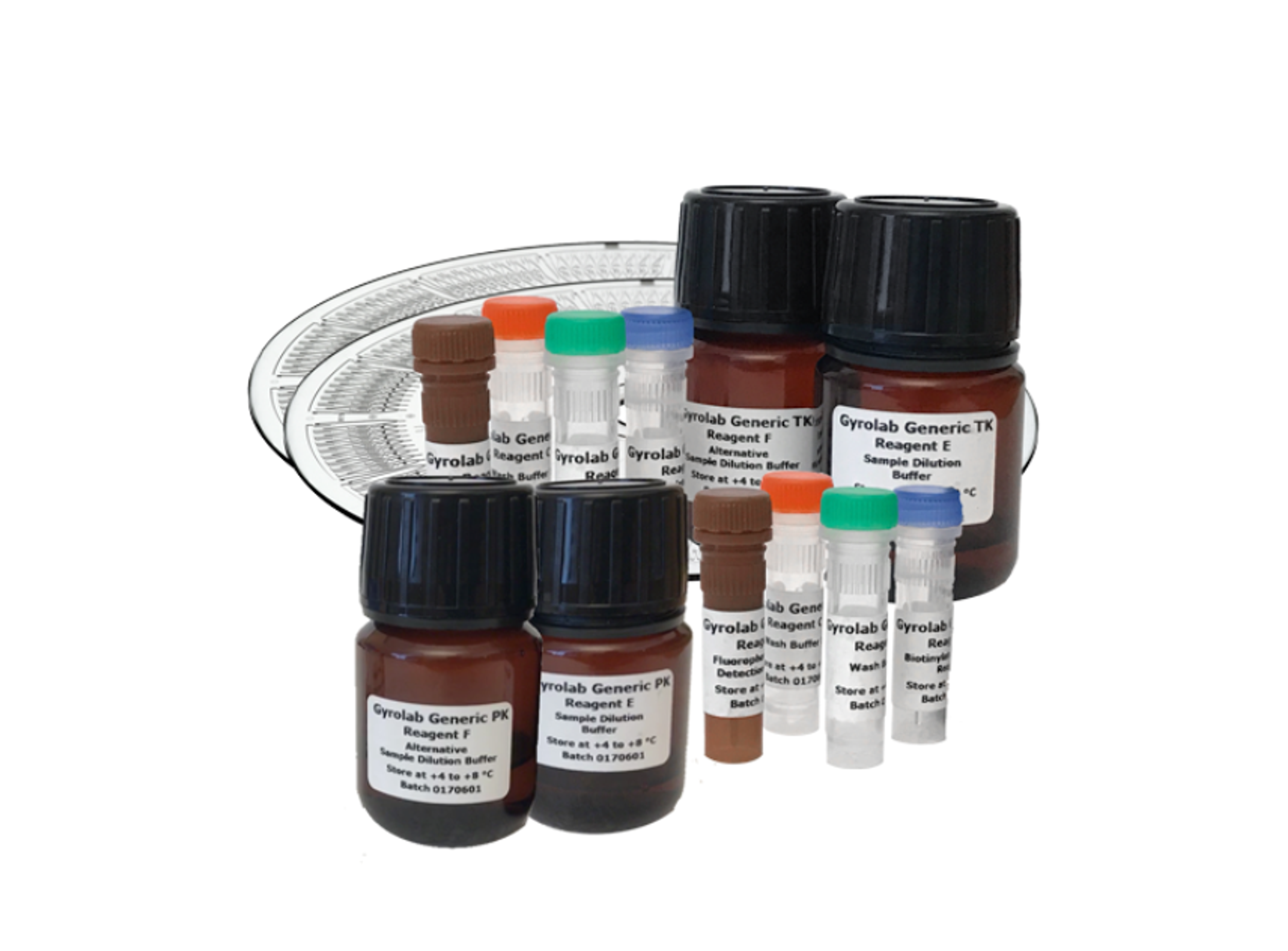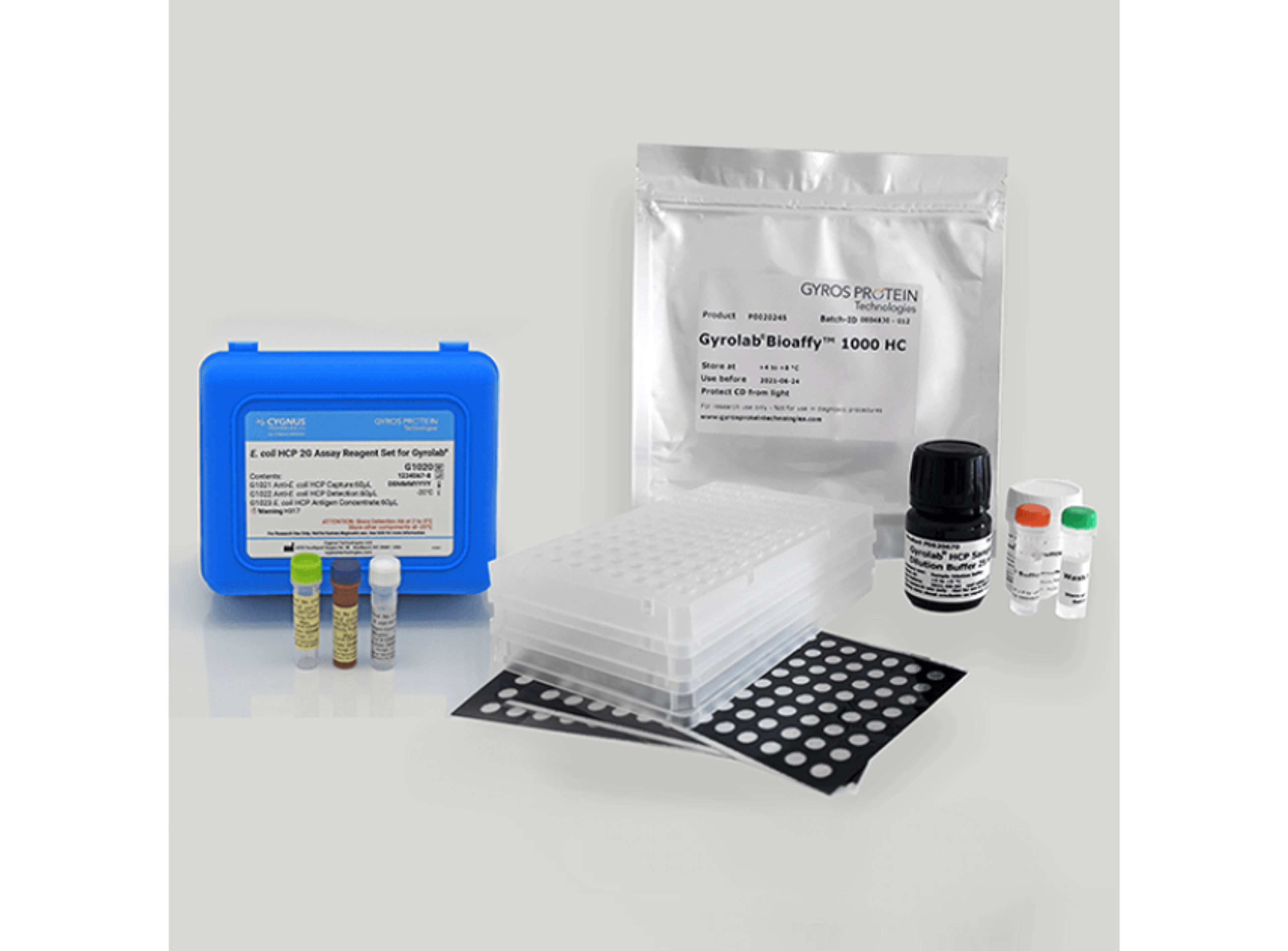Symphony X multiplex peptide synthesizer
Symphony X peptide synthesizer enables maximum flexibility for research, optimization and production of peptides
A versatile & reliable solid phase synthesizer that is easy to use.
Peptide drug discovery
The SymphonyX is a versatile solid phase synthesizer with 12 independent channels and has the capability to do automated TFA cleavages. One channel has infrared heating and real-time UV monitoring. Most of the peptides from up to around 60 amino acids that we synthesized on the SymphonyX have excellent purity and reproducibility however in our hands we found that there was no significant difference in peptide purity or yield for the sequences we made using infrared heated and room temperature couplings. Since our lab has many users, we are able to start new syntheses at any time without interrupting any other syntheses that were currently running. The software is easy to use for setting up syntheses and programming cycles. Users can program for special reagent addition and pre-activation or set up 12 additional parallel channels for larger scale syntheses. Programming synthesis cycles by using prewritten routines is straightforward and advanced users have the ability to change almost any variable in the synthesis program such as timing, volume, activation and number of steps. The instrument is very reliable and we never had any mechanical problems with the instrument and the technical teams have been very responsive to our technical and software questions. Running frequent cleaning cycles and changing filters regularly after many syntheses is essential for instrument reliability since the only problems we had were self inflicted due to amino acid precipitation in reagent lines from instrument inactivity.
Review Date: 10 Aug 2020 | Gyros Protein Technologies
Very reliable, great support, medium rated software.
Research purposes
We use the Symphony X in our research scale lab. We have had the Symphony X for more than 7 years now and it has proven to be a very reliable workhorse. Breakdowns have been few and we have always received good support from the service engineers to fix issues as soon as possible. We mostly use the Symphony X at 0.25 mmole scale, and also mostly run up to 12 peptides at a time. We find that this is quicker than running 24 in parallell, and while the other 12 peptides are running (if a SAR round is 24 peptides), the first 12 peptides can be cleaved and purified while the instrument is making the rest. This is a true parallel instrument and should a synthesis stop for whatever reason (i.e. an amino acid has precipitated out and blocking a tubing/valve), it will continue synthesis of the other peptides (as long as they don't require the blocked AA). The software is not designed for SAR rounds, so if you for example want to double couple a certain AA in our sequence, and what to do it for the 12 peptides you are running, you have to go and set it up for each individual sequence. It is easily done, however takes some time when doing it for all 12. In other words: it takes some time to program the instrument. However the reliability is second to none and we usually get very good results. The sales team at Gyros are very helpful and friendly and with a good response time - the same can be said about the technical support team. If our Symphony X was destroyed in a fire (or whatever you can think of) I would go out and buy a new one tomorrow.
Review Date: 6 Aug 2020 | Gyros Protein Technologies
A state of the art instrument, an all round, flexible, productive R&D synthesizer.
Synthesis of peptides, in multiple formats, for multiple purposes, from screening to pilot process
The Symphony X is the best overall peptide synthesizer currently available for general research and development. We repeatedly review other products and have yet to see anything else that provides a comparable level of productivity and flexibility. We drive our instrument very hard, in campaigns ranging from making hundreds to thousands of short peptides for screening, to many dozens of long multi-functional peptides for use in experimental product development programs. We also use it to develop technical transfer data to transfer to vendors for GMP synthesis. Those vendors are using the same instruments, so we know our methods will transfer robustly. The instrument is straightforward to learn how to use. We have repeatedly trained talented bachelors graduates to use this instrument and brought them to a level of independent operator within a few weeks. One of the biggest challenges with a Symphony X is the ability to make so many peptides that the downstream handling of the crude peptides, to purify, aliquot and label vials can take a lot of time. One Symphony X can keep a team of chemists busy with synthesis, cleavage/deprotection, purification, labeling and keeping notebooks up to date. It is a high-class problem to have. And that does not even include the enabling of the downstream biology that gets done with the compounds you have made. Because we drive this instrument really hard, we have inadvertently discovered a number of ways to reach its limits, and some of these experiences happened early on in the history of the Symphony X when both the company and the user base were learning what its real world capabilities really could be. However, both the technical staff and service teams have always been responsive. Mechanical fixes always happen quickly, albeit at times perhaps not as fast as you might wish if the service staff is already booked, and this has been only an occasional challenge, one which the company acknowledges when it happens. The technical teams are always ready to discuss how to use the instrument to help you get best results, including connecting you with other users who may have perspective that can help. Overall, despite its price, we have found this instrument to be an excellent value, as it has enabled us to make just about everything we have asked it to. Success on the Symphony X requires a skilled and knowledgeable user to get particularly good results. You have to know how to source and test reagents. Good reagents will allow you to get exemplary results. Lesser quality will lower the purity of your crude products no matter how good the fluidics and protocol in your synthesizer. Our experience has been that numerous medium-to-longer sequences that external vendors have failed to produce have been readily accessible on the Symphony X using relatively standard protocols. Even so, we still on occasion run into a sequence that is extremely difficult to make (heterogeneous crude product, or something like a deletion peptide that co-elutes with the target). In these instances, with careful analytics (LC-MS) and fractionation, we can typically still isolate the sequence of interest in sufficient amounts for discovery work. If we need more, we reevaluate the sequence and/or the purification protocol for further R&D. Rarely have we found supplemental approaches, such as using heating or multiple re-coupling, have been able to provide major improvements in results over standard protocols. We have compared our results with the Symphony X with the available single channel high speed microwave approach and seen comparable results, with some limited variation showing one method or the other can be better (or worse) for a given known difficult sequence. The 24-channel multiplicity of the Symphony X provides parallel synthesis productivity not achievable with other formats. If I were setting up a new R&D lab, the first thing I would consider is getting another Symphony X. Only if I needed substantially higher throughput as in a small-scale synthesis screening format would I consider alternate formats and instruments, and do so with trepidation given what I have seen with the Symphony. One the other end, for a large-scale synthesis, one would need a larger format system or proceed to manual synthesis in a large reactor. For short peptides (up to around 10-mers) the Symphony X can typically provide crude peptides of sufficient purity (70 to >>90% crude purity) to use directly in screening. For larger scale synthesis, one can run multiple channels and reaction vessels for the same sequence to prepare a larger quantity of crude peptide for subsequent processing. Multiple channels provide the ability to screen variable reaction conditions for process development. This instrument sits squarely within the space most chemists need a synthesizer to perform in.
Review Date: 31 Jul 2020 | Gyros Protein Technologies
Very flexible, reproducible, cost effective and high throughput.
Peptide drug discovery, process chemistry, neoantigen vaccine, method development, peptidomimetics
Symphony-X is a great instrument and cost effective for meeting the high demand criterias in the peptide manufacturing space. It’s a perfect instrument for small scale synthesis to several gram scale while maintaining high throughput in an unattended manner. The instrument and software are very user friendly and post installation service is excellent. The company also provide their expertise if you are working with different chemistry and help save your time designing new methods. The instrument provides quite reproducible results and reliability is good enough to maintain the high throughput parallel synthesis fast pace working environment. This instrument also gives the flexibility to optimize the difficult sequence with varying complexity where one can use this multi-channel instruments for testing different parameters in parallel. The heating channel also provides additional flexibility for accelerating chemistry and improve purity especially with unnatural amino acids, methylated amino acids and peptidomimetics.
Review Date: 30 Jul 2020 | Gyros Protein Technologies
Key Features:
- Parallel peptide synthesis platform that offers programming flexibility, extra amino acid positions, ultra PurePep pathway inside and prime-free Single-Shot™ deliveries and software designed for 21CFR part 11 compliance
- Maximum throughput and production
- Fast, efficient couplings delivering high quality crude peptides
- Extremely flexible with UV and IR heating

